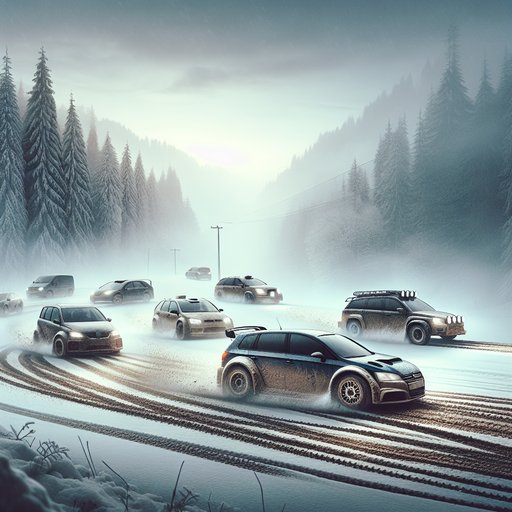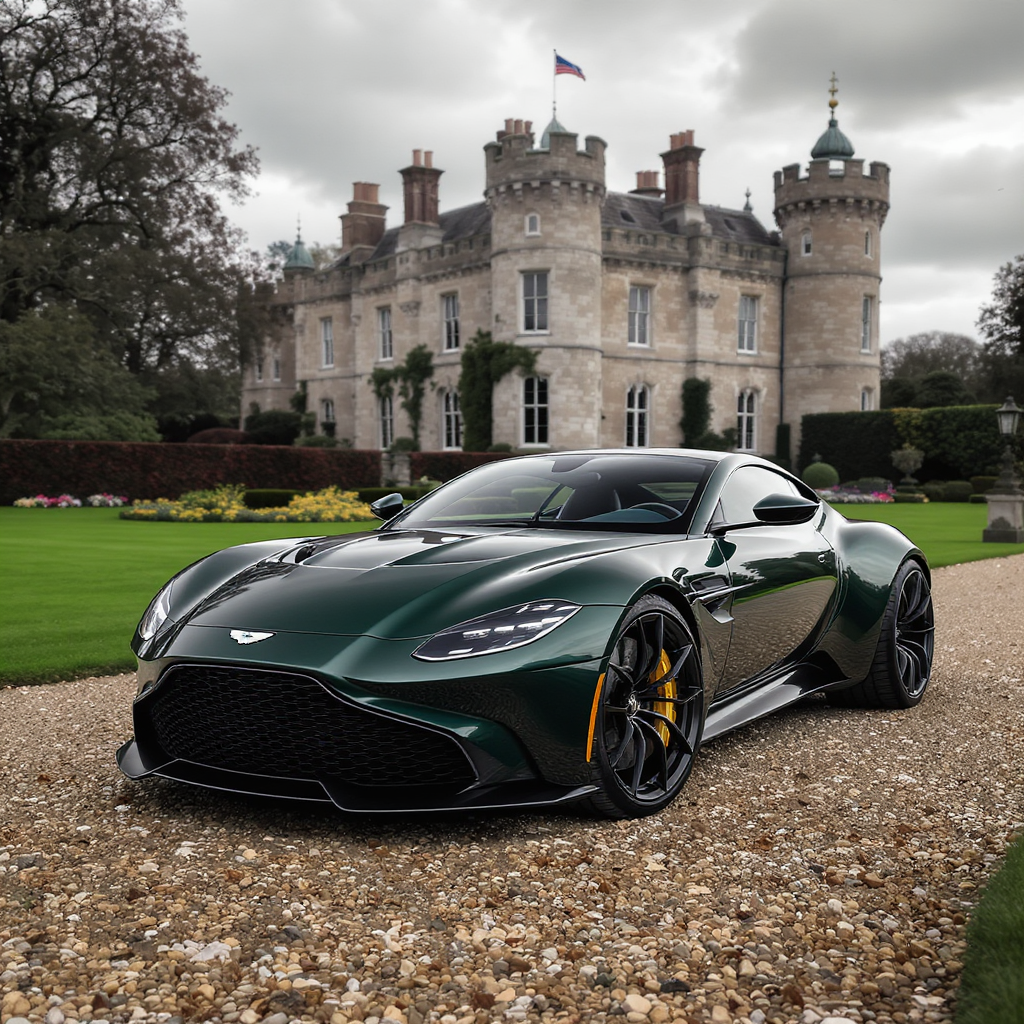
On winter mornings and dusty afternoons, the same badges found on commuter cars have chewed through snowbanks and skimmed over crests, their silhouettes familiar even beneath mud and headlamp pods. They belong to ordinary manufacturers—brands with minivans and hatchbacks—who learned to make their steel sing on hostile roads. Follow the tire marks and you find a story of how everyday shapes became rally legends, turning dealership stock into trophies and towns into stages. It’s all there in the spray of slush at Monte Carlo, the woodsmoke hanging above Welsh forests, the hiss of anti-lag bouncing off Alpine rock. The cars are recognizable; what they did with that recognition changed motorsport.
The light looks thinner at Monaco in January, as if the cold squeezes it into a finer thread. Outside the casino, heaters bloom, coffee steams, and on the cars clustered under sodium lamps the white circle of a number plate shines against red paint. They look small, almost comic, squared-off and bright, but once the start marshal lowers his arm the Mini Cooper S levitates on its springs over rutted ice, headlights crowding the snowdrifts. In 1964 it sails up the Col de Turini like a terrier tugging its leash, a city car turned mountaineer.
Ordinary doors shut with ordinary thunks. The trick is in the balance and the bravery, and when the morning newspapers mention the victory, families recognize the grille. A blue Alpine A110, light flashing off its curved nose, answers from the other side of the decade. The car is low enough to duck under the wind itself; it threads French tarmac with that flat, urgent engine note that sounds like a radio tuned between stations.
In 1973, the first World Rally Championship for manufacturers belongs to Alpine-Renault, the Berlinette’s fibreglass body and rear-mounted engine flitting across Europe while mechanics warm their hands on coffee and valve covers. It is a specialist shape built under mainstream stewardship, laurels pinned not to a boutique fantasy but to a badge you can find on a delivery van down the block. Then the trees close in and the sky turns the color of wet slate. Wales, Lombardy, Finland—places where the crowd stands in the mud and steam curls from the ground when the sun breaks through.
The Ford Escort comes stamped with a kind of honesty: box arches, flat bonnet, tail hung out at angles that seem like declarations. BDA engines rasp through the woods and speak in consonants. Escorts carry champions—Waldegård, Vatanen—over crests with their wheels turned more than their bodies, and the gravel answers in a thousand tiny clicks against the floors. Somewhere in Dagenham and Halewood, workers bolt together the same skeleton the heroes will fling sideways, proof that one platform can, with the right pieces, spin both school runs and silverware.
In the early 1980s, the rulebook yawns wide and the air is suddenly full of turbo noise and prophecy. Audi’s quattro arrives with permanent four-wheel drive and the everyday practicality of a family coupe recast as revelation. Snow that used to scare becomes a grip reservoir you can tap. Peugeot takes a city runabout, the 205, and tucks its heart behind the seats; short body, long shadow.
The 205 T16, bristling and boxed, looks like a small animal puffing itself up and runs like panic. Lancia’s Delta S4 hisses with supercharger and turbocharger layered into a single long inhale. The mood is electric, then electric with fear. Spectators step too close, trees loom too sharp, and after a string of tragedies in 1986, Group B is checked at the door and told to go home.
In the sudden quiet you can hear rivet guns and typewriters. The sport lives, but it tightens its grip. What follows is revelation turned into discipline. Group A lifts cars recognizable from commuter traffic, stiffens them, breathes on them, and sends them back out.
Toyota’s Celica GT-Four prowls with a workmanlike solidity, finding traction where roads resemble rivers and posting championships in the early 1990s when the red-and-green stripes stand out like a heartbeat on snow. Subaru, a maker of sensible wagons, drops the Impreza, paints it night-sky blue, pins golden stars to its flanks, and lets flat-four thunder and anti-lag crackle ricochet through forest and fjord. Mitsubishi’s Lancer Evolution answers with a tight mouth and elastic boost, its red-and-white livery shining against wet hedges; Tommi Mäkinen stacks drivers’ titles like neatly split logs while the team drags a manufacturer’s crown from 1998’s ruts. It is the era of tall antennae and air intakes you could crawl into, of homologation specials idling lumpy at traffic lights while their rally cousins tape stage times to service truck walls.
At the turn of the millennium, the family hatchback becomes a sabre. Peugeot takes the 206, a curvy, ubiquitous machine, and turns it into a dart that bends stages to its arc. The trophies pile up and a manufacturer’s hat trick follows. Citroën arrives next not with a flash of rebellion but with method.
The Xsara grows out of supermarket car parks into a precise instrument, then the C4, then the DS3, and Sébastien Loeb threads them through a decade as if threading a needle that never ends. The dominance is clinical, spectacular, and above all accessible: the road cars sit in showrooms with the same badges and similar dashboards. Beyond the top step, national and regional teams find their own leverage in kit cars and privateer classes. SEAT’s Ibiza humbles bigger fish in Formula 2 as its engines sing naturally aspirated arias in the late 1990s, while Škoda’s Fabia, years later in R5/Rally2 trim, becomes the small, relentless metronome of customer racing, winning so often it seems less like triumph than habit.
Across the service park, a familiar oval glints. Ford, never far away, keeps at it with the Focus and then the Fiesta, cars as common on cul-de-sacs as on start lines. There’s an economy in the way the M-Sport-run Fords move, a privateer’s thrift married to factory talent. The Focus shoulders through rough rallies with McRae’s aggression and Sainz’s precision; the Fiesta, years later, delivers drivers’ championships for Sébastien Ogier in 2017 and 2018, a small car carrying a big pressure with a kind of stubborn normalcy.
The crews break for tea in pop-up kitchens, wipe dust off laptops with the same towels they use for torque-wrenches, and the message filters back to anyone who has ever pulled into a grocery-store space: the car in front of you at the light might share bones with a world-beater. The Polo is almost shy as a road car, a design that does not shout. Its rally twin doesn’t need to. Volkswagen’s Polo R WRC turns the middle of the 2010s into a clinic, Ogier carving signatures into stages that hold even after the rains.
It wins and wins until the numbers begin to look like typographical errors, then corporate winds shift and the program closes abruptly, a tent folded while still warm. In the newly open air, Hyundai steps forward with the i20, a hatchback whose day job is urban errands. The rally version hems gravel into tight lines and, with a factory reawakened to rallying, collects consecutive manufacturers’ titles in 2019 and 2020. At the same time Toyota returns, this time with a Yaris that looks like someone compressed speed into a cube and let it spring back.
The little car wins a manufacturers’ crown in 2018, then a drivers’ championship in 2019 with Tänak, and keeps right on, a seriousness of intent worn lightly on a very small face. The present hums discreetly. Hybrid systems slip into the sport, cords plugged into generators as mechanics swap batteries alongside brake pads. Rally1 arrives in 2022 with the Puma, GR Yaris, and i20 N wearing the same surnames as cars outside schools, now built around safety cells and electrified shove.
The first time you see a hybrid light blinking on the rear window at a hairpin, it feels like a door opening that you didn’t know was there. They’re heavier, safer, smarter, and somehow still animated by the same alchemy: taking what the world drives to work and teaching it to dance on gravel. On shakedown mornings you hear both the future’s whir and the past’s throb, overlapping like tracks recorded on the same tape. Away from the world stage, the lineage keeps multiplying.
Dealers pass across parts catalogs and entry forms. Fabia RS Rally2s turn up with brand-new paint and brand-new hopes in dozens of countries; Peugeot 208s buzz in Rally4, Renault Clios pop and snarl in Rally5, and suddenly the distance between a first finance plan and a first stage time feels not so insurmountable. Success becomes a ladder rather than a lighthouse, built by companies whose names appear on shopping bags and bus stops. The sport’s technology may grow complicated, its budgets high, but the rear-view mirrors still hold reflections of towns waving from behind hedges as noise peels away down a single-lane road.
If there’s a through-line, it’s not a single brand or a single season; it’s the way familiarity can surprise you when it’s honed. A badge you trust to start on a frosty morning is also a passport to col stages and cattle grids, and the same bolt that holds a child seat might, in another context, hold a skid plate. As long as the world has tight corners and weather that changes by the mile, ordinary companies will keep finding extraordinary speed in the shapes they sell. It isn’t a fairy tale of transformation so much as a test of what’s already there, pressed hard against the road.
On the walk back from a stage finish, the crowd thins, and a courier van passes slowly with a rally map taped to its dash. That’s the point, maybe: these cars and their makers fold rallying into the useful fabric of everyday life, and then pull it back out, creased and brilliant, for when the whistle blows. The next generation waits with hybrid badges and cautious optimism, but the script is familiar. Put a number on an ordinary door.
Close it with a click. The rest is what happens when tarmac, gravel, and ice ask the simplest question and a showroom badge answers without blinking.








